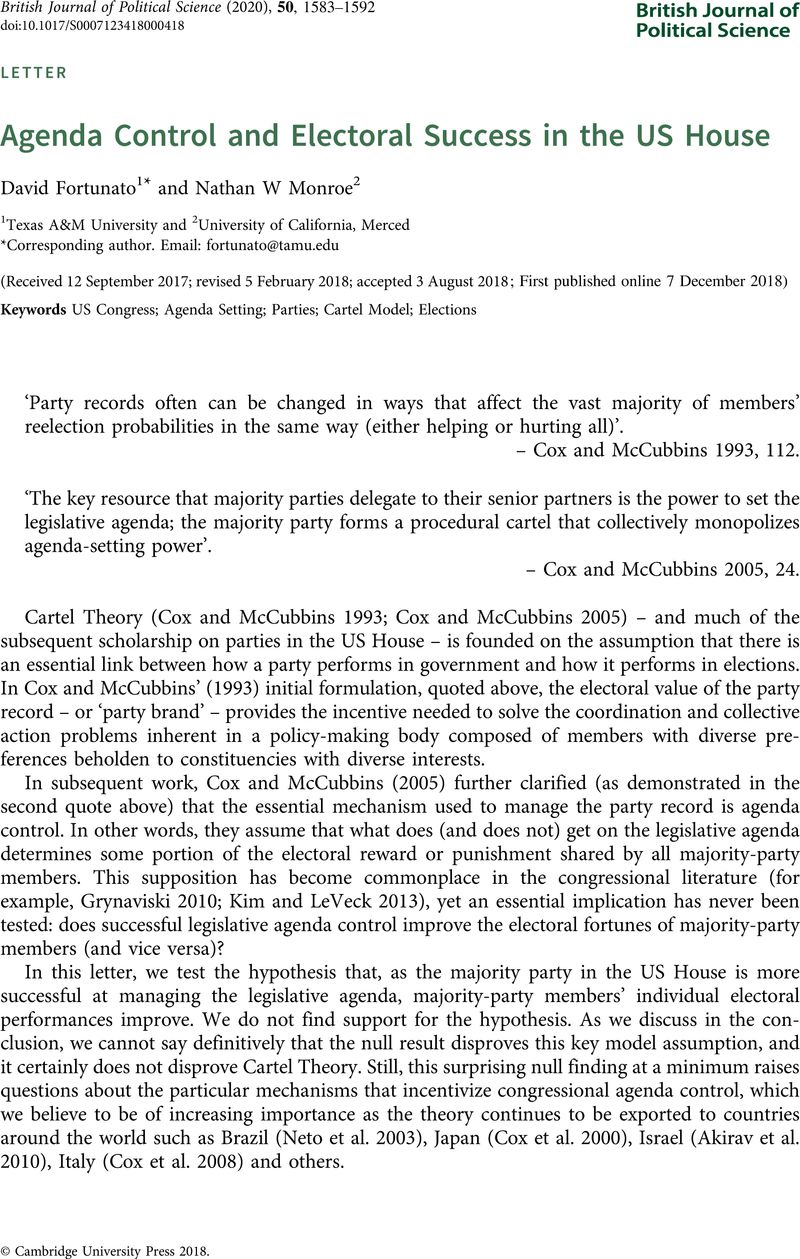Crossref Citations
This article has been cited by the following publications. This list is generated based on data provided by Crossref.
HANRETTY, CHRIS
MELLON, JONATHAN
and
ENGLISH, PATRICK
2021.
Members of Parliament are Minimally Accountable for Their Issue Stances (and They Know It).
American Political Science Review,
Vol. 115,
Issue. 4,
p.
1275.
Provins, Tessa
Monroe, Nathan W.
and
Fortunato, David
2022.
Allocating Costly Influence in Legislatures.
The Journal of Politics,
Vol. 84,
Issue. 3,
p.
1697.
Ballard, Andrew O.
2022.
Bill Text and Agenda Control in the US Congress.
The Journal of Politics,
Vol. 84,
Issue. 1,
p.
335.
Hanretty, Chris
and
Sheppard, Jill
2024.
Legislators’ accountability for issue stances: evidence from Australia’s Marriage Law Postal Survey.
Australian Journal of Political Science,
Vol. 59,
Issue. 2,
p.
236.
Clinton, Joshua D.
2024.
Causal Inference and American Political Development.
Vol. 17,
Issue. ,
p.
239.



